February 2022
February 13, 2022
Super Ball Music and the Super Bowl

Wham-O introduced the Super Ball in 1965. It was a huge success as a toy, but it also inspired music... and was the reason the Super Bowl got its name. From Wikipedia:
Lamar Hunt, founder of the American Football League and owner of the Kansas City Chiefs, watched his children playing with a Super Ball and then coined the term Super Bowl. He wrote a letter to NFL commissioner Pete Rozelle dated July 25, 1966: "I have kiddingly called it the 'Super Bowl,' which obviously can be improved upon." The league's franchise owners had decided on the name AFL–NFL World Championship Game, but the media immediately picked up on Hunt's Super Bowl name, which became official beginning with the third annual game in 1969.
Posted By: Alex - Sun Feb 13, 2022 -
Comments (2)
Category: Music, Sports, Toys, 1960s
Understanding the Law: The Worm
Understanding the Law: The Worm, Diane Obomsawin, provided by the National Film Board of Canada
Posted By: Paul - Sun Feb 13, 2022 -
Comments (2)
Category: Law, Lawsuits, PSA’s, Cartoons, 1990s
February 12, 2022
The Contents of an Ostrich’s Stomach
Frederick William Bond took the photo below at the London Zoo showing the items found in an ostrich's stomach following an autopsy: a lace handkerchief, a buttoned glove, a length of rope, a plain handkerchief, copper coins, metal tacks, staples, hooks, and a four-inch nail. The nail had killed it.The photo is undated, but I'm guessing it was taken sometime in the 1930s. (Update: the Flickr source says it was taken circa 1930.)
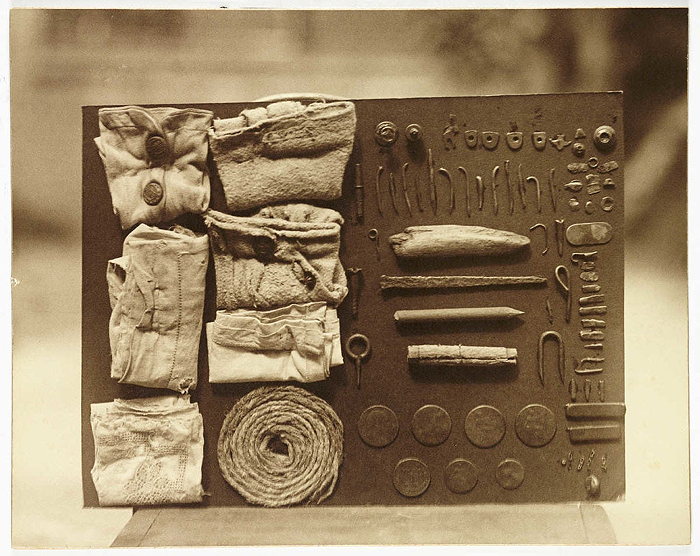
Image source: National Science and Media Museum on Flickr
Along similar lines is this story from 1972 about items found in the stomach of an ostrich at a private French zoo: coins, telephone tokens, and stones. What wasn't found was the diamond watch it had snatched off a spectator the previous year.
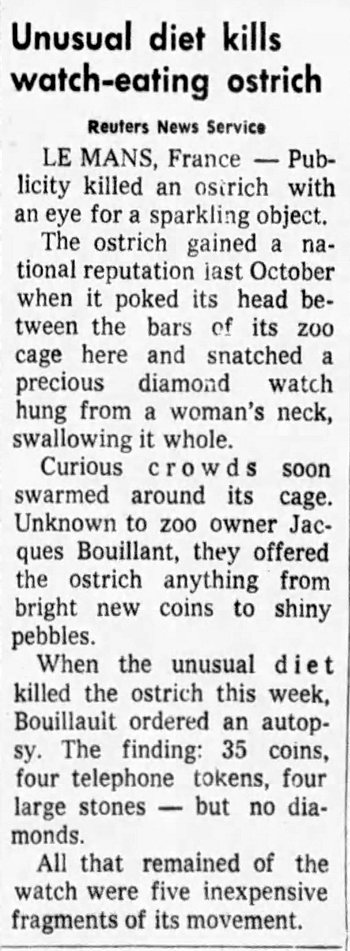
Miami News - Jun 12, 1972
Posted By: Alex - Sat Feb 12, 2022 -
Comments (2)
Category: Animals, Food, Stomach
The Duke of Paducah
If I might rephrase a famous statement for our WU purposes: The past is a weird country--there's a lot of weirdos there.His Wikipedia entry.
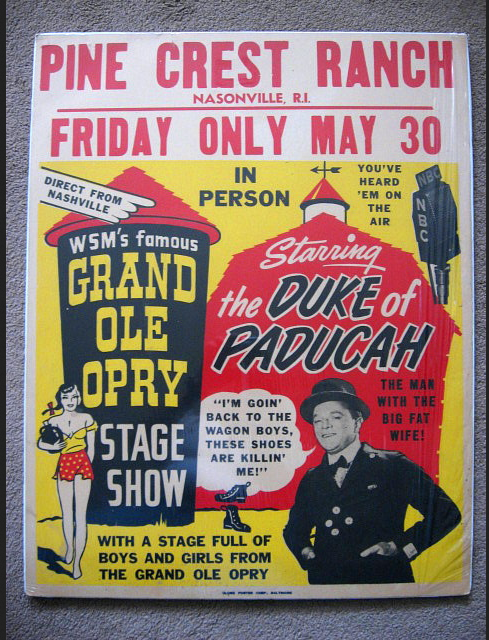
Posted By: Paul - Sat Feb 12, 2022 -
Comments (0)
Category: Hillbillies, Country Bumpkins, Ruralism and Flyover Country, Humor, Twentieth Century
February 11, 2022
Merrill Township Community Center
In 1977, the construction of the Merrill Township Community Center in Michigan was almost complete. However, it was located in the middle of a forest, and no funds remained to build a road to it. Nor was there a parking lot. So the building sat empty, never used, until the roof collapsed two years later during a snow storm.It seems that Merrill Township eventually got a community center built in a more accessible location. They don't mention the old community center on their website. The ruins must still be out there in the woods.

York Daily Record - Aug 24, 1977
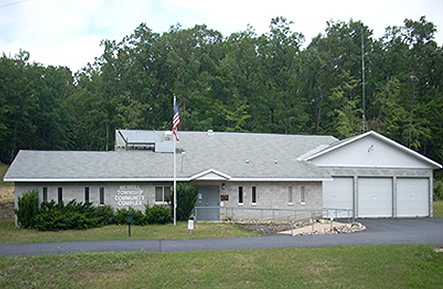
The new Merrill Township Community Center
Posted By: Alex - Fri Feb 11, 2022 -
Comments (6)
Category: 1970s, Ruins and Other Abandoned or Shuttered Structures
Mystery Gadget 100
What's happening with these poor doggos?The answer is here.
Or after the jump.
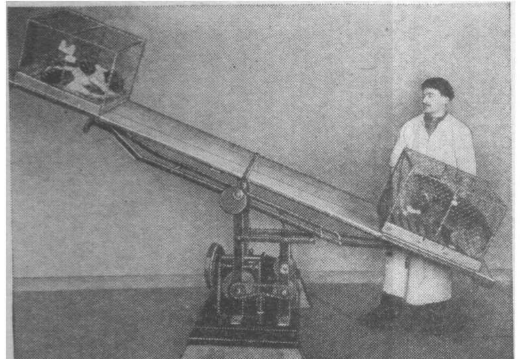
More in extended >>
Posted By: Paul - Fri Feb 11, 2022 -
Comments (0)
Category: Science, Dogs, 1930s
February 10, 2022
Ice-Block Skiing
It's like water-skiing, but on blocks of ice towed through city streets.Wipeouts would be a lot more painful.
Info from the LA Public Library:
I'm guessing the year was 1936, since the other images of the 'Miss California Bathing Beauty Contest' at the library are from that year.
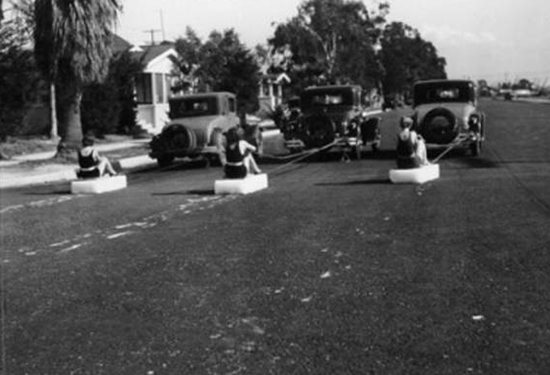
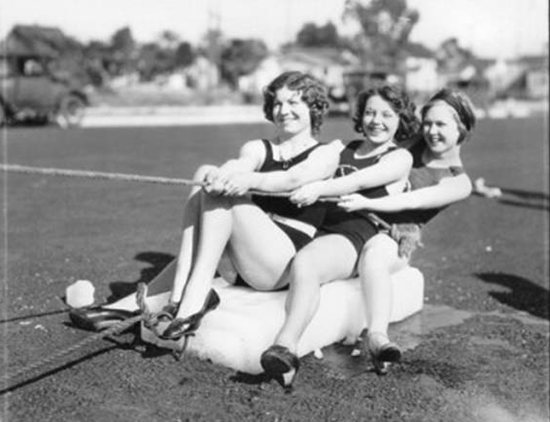
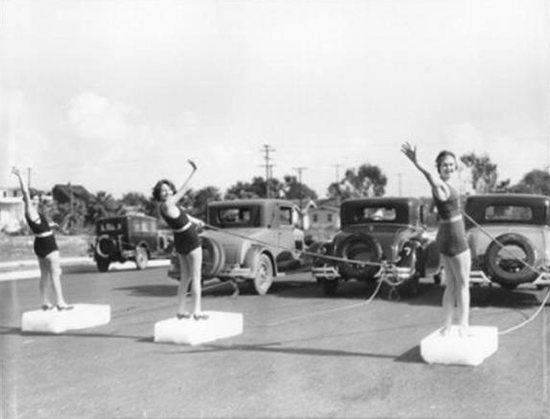
Posted By: Alex - Thu Feb 10, 2022 -
Comments (3)
Category: Sports, 1930s
Ellen Harkonen, Potato Queen of 1936
Source: Keansburg News (Keansburg, New Jersey) 31 Dec 1936, Thu Page 4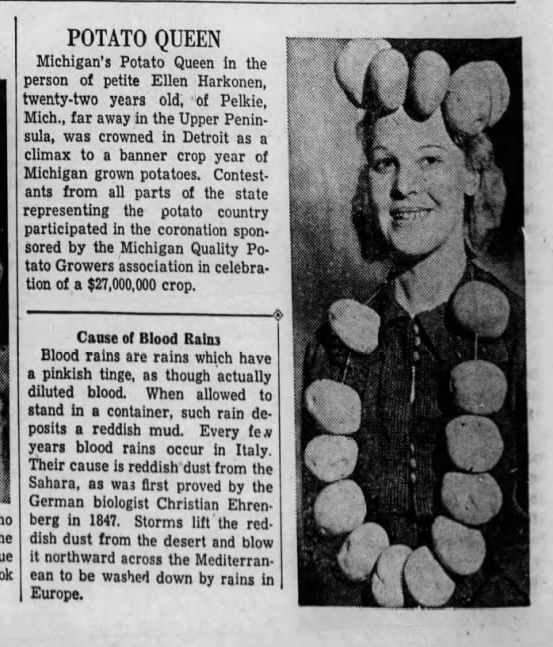
Posted By: Paul - Thu Feb 10, 2022 -
Comments (2)
Category: Agriculture, Awards, Prizes, Competitions and Contests, Beauty, Ugliness and Other Aesthetic Issues, Food, 1930s
February 9, 2022
Frances Gabe’s Self-Cleaning House
Frances Gabe had a vision of putting an end to housework. No more dusting or vacuuming. All a homeowner would have to do would be to push a button and the house would clean itself, as if the entire structure was a giant dishwasher.Of course, this meant that everything in the house had to be waterproofed. But it also meant that the actual dishwasher and clothes washer became redundant. Just hang dirty clothes in the closet and stack dishes in a cabinet — they'd get washed along with the rest of the house.
Gabe offered two stories for how she came up with the concept of the self-cleaning house. The first was that, as a newly married young woman, she once noticed a jam stain on the wall. Instead of scrubbing it off she decided to get a hose and sprayed it off.
The second story involved divine inspiration. After divorcing her husband she said that she was sitting, feeling despondent, and praying to God to provide her with some purpose to keep her going. Suddenly two angels appeared on her shoulders. And then, she said, "I picked up a pencil and began scribbling. I thought I was just doodling. Then I stopped and looked, and there was the self-cleaning house."
She received a patent (No. 4,428,085) for the self-cleaning house in 1984. She also transformed her own house in Newberg, Oregon into a prototype. From what I can gather, she never managed to make the entire house self-cleaning, but the kitchen could clean itself.
When she was alive she would offer tours of the house, but she died in 2016, and the new owners of the house haven't maintained its self-cleaning features.
Incidentally, Gabe was an invented name, so it's not what appears on her patent. Her full name, when married, was Frances Grace Arnholtz Bateson. She constructed 'Gabe' out of her initials.
More info: mit.edu, wikipedia
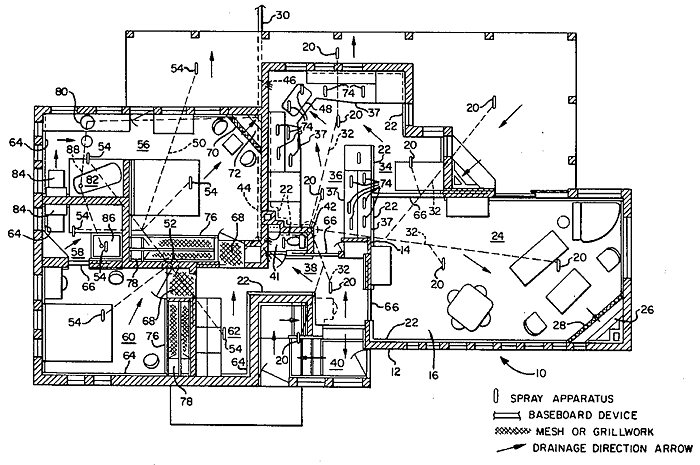
Posted By: Alex - Wed Feb 09, 2022 -
Comments (6)
Category: Architecture, Inventions, Patents, Baths, Showers and Other Cleansing Methods
Borivoj Dovniković, RIP
His Wikipedia page.See more of his oddball cartoons on YouTube.
Posted By: Paul - Wed Feb 09, 2022 -
Comments (0)
Category: Surrealism, Obituaries, Cartoons, Europe
| Get WU Posts by Email | |
|---|---|

| Who We Are |
|---|
| Alex Boese Alex is the creator and curator of the Museum of Hoaxes. He's also the author of various weird, non-fiction books such as Elephants on Acid. Paul Di Filippo Paul has been paid to put weird ideas into fictional form for over thirty years, in his career as a noted science fiction writer. He has recently begun blogging on many curious topics with three fellow writers at The Inferior 4+1. Chuck Shepherd Chuck is the purveyor of News of the Weird, the syndicated column which for decades has set the gold-standard for reporting on oddities and the bizarre. Our banner was drawn by the legendary underground cartoonist Rick Altergott. Contact Us |

